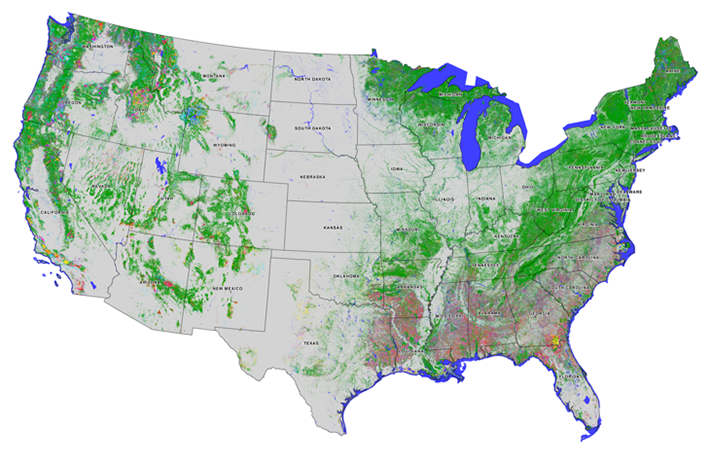Research Page
Biosphere Disturbance
Disturbance processes such as fire, logging, and insect damage are an integral aspect of how ecosystems change through time. In addition, there is evidence for increased disturbance frequency and altered regrowth patterns due to recent climate change. These changes to disturbance regimes have significant implications for land-climate feedbacks and ecosystem services.
Long-term satellite records provide an objective history of ecosystem disturbance, allowing us to understand the interplay between human activities, climate, and geography in controlling disturbance rates. Satellite measurements of vegetation condition and structure also allow us to measure the rate of carbon uptake as disturbed patches regrow.
GSFC research on forest disturbance includes long-term mapping activities using Landsat, MODIS, and other satellite sensors, as well as research on fire dynamics and forcing, and the impacts of disturbance on the terrestrial carbon cycle.
Areas of Investigation
North American Forest Dynamics Project (J. Masek)
Amazonian Fire Dynamics (D. Morton)
Role of Disturbance in US Carbon Cycle (G.J. Collatz)
Long-term satellite records provide an objective history of ecosystem disturbance, allowing us to understand the interplay between human activities, climate, and geography in controlling disturbance rates. Satellite measurements of vegetation condition and structure also allow us to measure the rate of carbon uptake as disturbed patches regrow.
GSFC research on forest disturbance includes long-term mapping activities using Landsat, MODIS, and other satellite sensors, as well as research on fire dynamics and forcing, and the impacts of disturbance on the terrestrial carbon cycle.
Areas of Investigation
North American Forest Dynamics Project (J. Masek)
Amazonian Fire Dynamics (D. Morton)
Role of Disturbance in US Carbon Cycle (G.J. Collatz)

